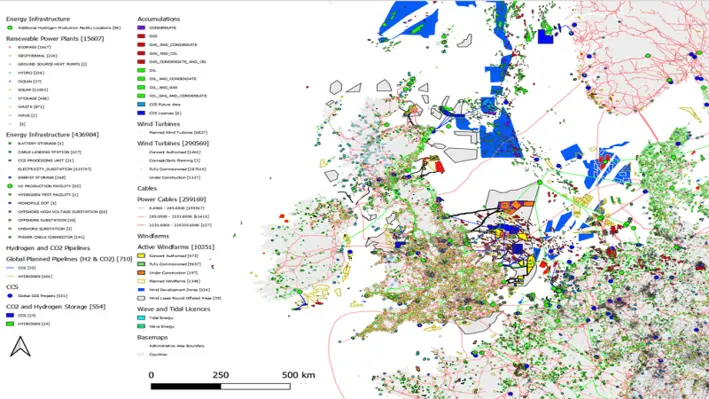

Isaac Kenyon, SpatialEnergy Data Analyst at MapStand, spoke to Offshore Network regarding his company’s auspicious start when it launched just before the pandemic and how it has taken this adversity in its stride to help the oil and gas industry reap the benefits of data.
MapStand was created when Founder, Francis Cram, identified a major gap in the market while working at a small E&P business situated in the southern North Sea. Cram realised that one of the biggest frustrations for his company (and many others like it) was that while there were a lot of data providers available, all were very expensive and that all the free open source data was not together in one place. For many organisations it was therefore a nightmare finding easily accessible and affordable data to support their operations. With a view to changing this, Cram founded MapStand in order to build a product that brings in open source data from all around the world and make it available in one place a range of companies can easily access and utilise it, without having to pay fortunes.
Kenyon explained, “Different data providers such as governments have different data portals and these are all separate. MapStand’s aim was to combine all of these into one place with no border dividers which makes life a lot easier, especially in regions such as the North Sea where there are a lot of different countries performing different types of activities.”
The MapStand Community online platform provides global data coverage and is free for anyone to sign up, view and explore data sets. The multi-layered search feature allows company asset summaries and country overviews for E&P, Renewable Energy and Infrastructure insights.
“We have a lot of people who are excited about the product and want to support it which they do so by providing feedback in areas where we might not necessarily have as much data. They offer data they have produced or can point us in the direction of where to obtain it. A lot is therefore crowd sourced and in some areas we also get a lot of relinquishment reports from certain government agencies etc which helps to map these areas and show potential explorations prospects and leads for users,” Kenyon stated.
Products serving the industry
Aside from the MapStand Community Platform the company also has two other main products which it has launched – the MapStand Hub and the MapStand Enterprise.
The Hub is a cloud-based web mapping area for clients which adds a lot more functionality such as collaborative real-time working within a online geospatial portal. “This is a geospatial workspace is where you can pull in data sets, manipulate them and create dashboards. You can drill down on data sets, filter attributes and more. Through the Enterprise subscription we are able to distribute our data layers into other companies’ software and through APIs people can tap into our data sets and bring our data into their own products,” said Kenyon.
The Newsfeed is a functionality of our app which may in the future turn into a product where users can get daily updated sources of company activity and announcements from the energy industry. Kenyon commented, “Platforms, infrastructure, etc in the database get tagged to the newsfeed and by clicking on these tags users will get taken to those objects on the map – allowing them to explore news in a different way.”
Supporting the energy transition
Kenyon explained that the products aid oil and gas companies by providing up to date information on dispute management and territorial claims which is especially important when it comes to licences. However, MapStands solutions have been particularly useful in supporting the industry’s fight against climate change – an issue which the company keeps close to its heart.
Kenyon noted, “A lot of oil and gas companies are looking to get involved in the energy transition and re-positioning to become energy integrated companies. For them, having the combination of renewable power data sets with oil and gas data sets is very useful. We can help to highlight opportunities around carbon capture storage, building windfarms to support activities, electrifying platforms, etc.”
Collaboration is key for driving this energy transition and indeed the company, Kenyon continued. He added, “We want to scale up our energy transition collaborative efforts. Being able to work together to share data will help everyone reach their climate goals quicker and everyone will have an equal playing field know where things are and who is doing what/where. People can go on MapStand looking for opportunities and may see that there are lots of different projects nearby they have never even heard of which they could get involved in. One of our main ambitions is to promote collaboration and transparency, especially around energy data.”

In for the long-haul
Launching just before the dawn of Covid-19 was unfortunate timing, however MapStand adapted well, re-considered their goals and now have an eye for expansion on the future. “Covid was hard-hitting on the oil and gas industry at the start and we pretty much launched straight into this. We had to scale back a bit on a lot of our ambitions but we have also pivoted and focused on the long-term to support the energy transition. In many ways the pandemic has helped drive this transition and we are looking to support this going forward. Our ambition now would be to scale up the data sets we provide.”
“We are also trying to improve our products for users and are constantly working on automation and making our processes a lot smoother. Finally, we want to continue to grow our community. The larger we grow in terms of cliental and the more people signed onto our platform app the better our data quality will be worldwide,” Kenyon concluded.
Find the latest update to MapStand here.


At UDT EU LIVE 2021, in London, the energy community gathered for some much-needed networking and knowledge sharing as it continues to work through one of the most tempestuous periods in living memory. At UDT LIVE 2021, in London, the energy community gathered for some much-needed networking and knowledge sharing as it continues to work through one of the most tempestuous periods in living memory.
Senior figures and decision makers from operators, service companies, consultancies and more were in attendance, following on from UDT EU VIRTUAL which was held earlier in the year.
The key topics covered included change management, collaboration and partnerships, business change, environmental impact, data, and the energy transition. Unique presentations and panel discussions were held on each, as the energy community took the time to consider the most prominent issues impacting their business.
Highlights included:
Spirit Energy: Esther Diederen, Digital Transformation Lead, Spirit Energy, showcased her company’s digital transformation journey which, so far, has delivered 2x the cost of the initiative. From the start, the company identified that it was important to start small, and gained momentum in order to foster a sense of movement right from the start. By doing this, employees were able to see progress and benefits, and were more willing to participate.
Diederen also touched upon lessons learned along the initiative including the importance of stakeholder management, the need to stick to the ambition and vision, team diversity is a key strength, delivering a mix of quick wins and foundational deliveries is imperative and the value of failing quick and knowing when to stop. While there were still some nuts that the company needed to crack, there had been notable changes to the way the company was working and this was beginning to reflect in the value saved.
Kongsberg Digital: Stian Skjaevesland, Global Commercial Director – Digital Wells, Kongsberg Digital, explored how real-time data is collected and whether it could be collected with better quality and make more use of it; looked at how digital transformation efforts have started breaking down silos so that contextualised data is now available which adds a new layer of insight to the end-users of today and tomorrow; and showcased a used case where the company is using the contextualisation of data to reduce admin time and do real-time reporting for an operator that they work with.
Imaged Reality: With the expensive nature of field trips to assess geology and travel restrictions still hampering movement, Claudia Ruiz-Graham, CEO of Imaged Reality, explained how virtual reality can be utilised for immerse learning to substitute for visits on-site. The company’s 3DGaia platform is a tool for the oil and gas industry to explore locations in a virtual format from the comfort of home with features including remote collaboration; direct outcrop interpretation; satellite imagery; integration with seismic images; well logs and more; interpretation tools; and the ability to add personal content.
With the networking complete, attendees returned to their companies with fresh ideas and lessons learned in mind. UDT EU will return in December 2022 where it is certain that another year of dealing with Covid-19 and technological advances will provide fresh points of discussion for another exciting conference.
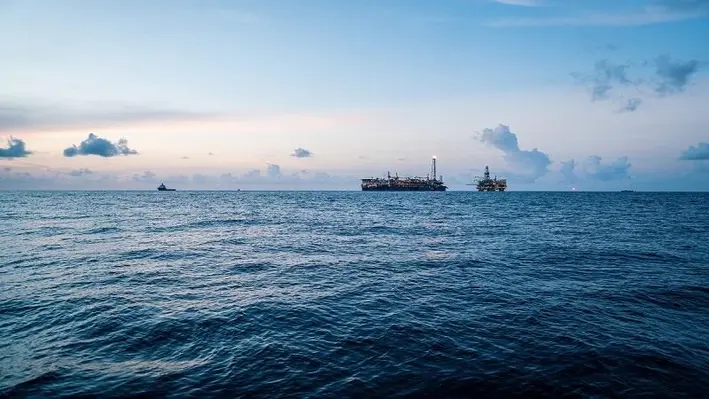

InterMoor has been awarded a key contract with Chevron Thailand Exploration and Production, Ltd. (Chevron) for the disconnection and removal of Single Point Mooring (SPM) Buoy 1 and 2 in the Gulf of Thailand.
InterMoor will provide project management, engineering, procurement, as well as offshore execution for the decommissioning of the floaters. The campaign is expected to commence once necessary endorsements are in place.
For the execution of the project, InterMoor will be utilising a variety of high spec vessels to carry out the decommissioning activities along with cutting tools and other auxiliary/associated equipment by Acteon product and service line brands, Claxton, Aquatic, Seatronics and UTEC.
InterMoor APAC General Manager Vin Bala commented, “While InterMoor continues to enhance our reputation as a major Transportation and Installation (T&I) service provider in the Asia Pacific region, one of our unique strengths has always been in the decommissioning of subsea assets. We are extremely honoured and proud to have been awarded this important project from Chevron and see this as a testament to our team’s capabilities and our long-standing tradition of safe, execution excellence in decommissioning work in the region.”
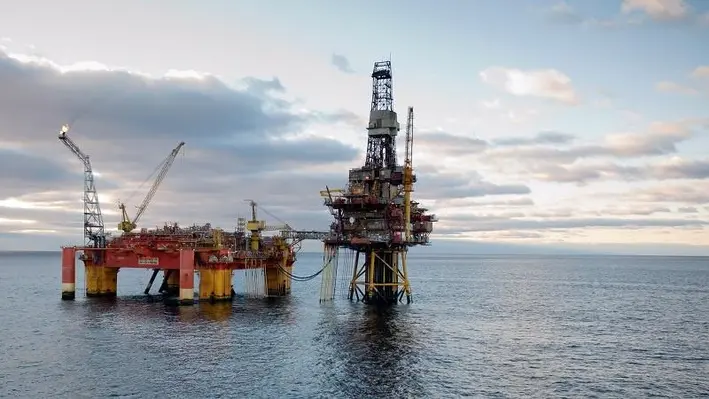
 After receiving a letter of intent for decommissioning work in Norway in March 2021, Aker Solutions has now formally signed a sizeable award with Heerema Marine Contractors for the decommissioning of the Heimdal and Veslefrikk fields.
After receiving a letter of intent for decommissioning work in Norway in March 2021, Aker Solutions has now formally signed a sizeable award with Heerema Marine Contractors for the decommissioning of the Heimdal and Veslefrikk fields.
The scope of the work includes the reception, dismantling and recycling of three offshore installations from the fields. The Heimdal and Veslefrikk platforms will be removed by Heerema Marine Contractors and transported to Aker Solutions' decommissioning facilities at Eldøyane in Stord, Norway.
The infrastructures to be removed weigh approximately 68,000 metric tons in total. The objective is to recycle about 98% of the steel and materials.
Early engineering will begin directly for the Heimdal platforms and earliest start of offshore executions can be in 2024.


After a rigorous selection process by a panel of expert judges, on a night filled with celebration and laughter in Aberdeen, the winners of the Offshore Well Intervention Global Awards 2021 were finally revealed.
Spanning six separate categories, the awards recognised companies which had, across another incredibly challenging year, remained stalwart in their commitment to progressing the well intervention industry through creating new practices, evidencing new techniques and launching new technologies.
The OWI Awards 2021 winners:
Most Innovative Solution: Baker Hughes
Recognising that subsea wellhead removal from vessels can bring constraints and risks, Baker Hughes introduced the Terminator vessel-deployed, ROV powered subsea wellhead cutting system. This system includes a hydraulic motor, wellhead connector, and Hercules cutter in order to facilitate safe, efficient and cost-effective wellhead removals in a period of less than an hour for single cuts.
Using a mechanical cutter instead of AWJC methods, the Terminator system only requires two personnel to operate (6-8 are required for AWJC methods) and eliminates associated risks with high pressures, among other advantages.
The solution was deployed by Neptune Energy in the North Sea and was able to save the operator 6-12 rig hours while achieving no down time and no HSE issues.
Paul Stein, Commercial Director Subsea Intervention at Baker Hughes, said, “This award goes to the heart of Baker Hughes’s values around Collaborate, Lead, Care and Grow. To achieve this recognition, the team touched on all four of these values. Huge congratulations to both Jarle Hvidsten and Dave Scott, together with the Terminator project team in making this happen.
Commenting on the next steps for the Terminator solution, Stein added, “Proving the technology is now doing more work for customers and broadening its utilisation across the globe.”
Best Project Outcome: BiSN
BiSN was crowned victor of the Best Project Outcome for an outstanding campaign in the North Sea. The company was commissioned by AkerBP to set a final barrier within 30 wells to ensure a secure environmental solution so that the plugged wells did not emit pressurised gases. Due to the need to properly secure the well prior to the conductor removal, a non-permeable bismuth plug was placed inside the conductor to mitigate all risks for hydrocarbon migration from within the wellbore before the surface casing and conductor were removed.
The BiSN Wel-lok™ M2M technology was utilised for this campaign which was able to provide an environmentally safe gas tight sealing solution while reducing time, personnel and equipment required. The campaign was concluded ahead of schedule and all 30 plugs have been tested so that no emittance of gases will be detected, for perpetuity.
Colin Wooller, Global Head of Marketing at BiSN, remarked, “The whole team at BiSN appreciate the acknowledgment of winning such a prestigious award, it was truly a global effort with a very detailed testing programme completed at our UK and USA facilities in the two years prior to the start of the main campaign. Manufacturing of the tools were a separate challenge as these were the largest metal P&A plugs ever manufactured, weighing in at 15 tonnes. AkerBP provided support and technical input throughout the process, including obtaining approval from the Norwegian Petroleum Authority (PSA) to deploy the tools as a barrier, another major milestone in the acceptance of the BiSN products as a permanent P&A barrier.
“Building on the back of the PSA approval and with 300 tools now deployed across the globe, the next few years are packed with excitement for BiSN. We are leading the world in the deployment of bismuth-based alloy tools not just for P&A, but for a full range of completions and invention applications. Our research department also continues to develop new products including the soon to be launched Perf & Melt™ product that will revolutionise the P&A market again by bring the possibility of true rigless abandonment for the first time, with the elimination of section milling.”
Best Example of Collaboration: Subsea Services Alliance
The Subsea Services Alliance, which combines the collective knowledge and strengths of Schlumberger and Helix Energy Solutions Group, has been named the best example of collaboration at the Offshore Well Intervention Global Awards 2021.
The non-incorporated collaboration was conceived to deliver integrated subsea intervention and decommissioning solutions to the offshore oil and gas industry in order to maximise economic recovery and lower costs.
The capability of the Alliance has been demonstrated in the delivery of the Q7000, an advance semi-submersible well intervention vessel. The vessel has been hard at work in West Africa performing campaigns for Exxon Mobil, Total and Chevron in Nigeria; successfully lowering POB, increasing operational efficiency and capturing value.
David Carr, Senior Vice President of Helix Well Ops, noted, “After 7 years of the Subsea Services Alliance, and almost 100 wells intervened by an integrated Helix/Schlumberger package, we are very pleased to be acknowledged by the industry.”
HSE Innovation: FENNEX
FENNEX was recognised for its Behaviour-Based Safety Solution (BBSSTM) which addresses the challenges and complexities associated with end-to-end workflows governing the safety management in the offshore oil and gas industry.
Developed through the combination of deep-industry knowledge and cloud computing technologies the solution is engineered using AI and Machine Learning Technologies to allow the easy input of critical safety data into a collaborative cloud environment so that customised reports can be published in real time.
This enhances the visibility and transparency of critical trends of operations HSE risks and hazards across organisations, which was demonstrated through its implementation across Noble’s global offshore fleet. In six months the BBSSTM delivered significant operational and sustainability efficiencies including a safer workplace, boosted engagement by 30%, and a reduction in programme cost by 70% – saving 15,000 man-hours and up to half million paper cards each year.
Nassima Brown, DIRECTOR of Business Strategy & Administration at FENNEX, remarked, “We are honoured to receive this prestigious award; to be recognised as a leader in breakthrough technologies to advance safety performance in the energy sector is a wonderful endorsement of our team’s efforts and dedication to transforming the delivery of digital solutions for our industry.
“For a small tech company as ours, this recognition helps raise our profile, and provides us with an incredible industry exposure – shining a spotlight on the fantastic achievement that is possible through collaboration and strong partnership with our forward-thinking customer Noble Drilling.”
Brown added, “Our ambition is to rapidly expand and scale up the application of BBSSTM within the energy industry, and play a part in transforming and optimising critical business processes to pursue excellence in safety performance, not only within oil & gas, but any high-hazard industry.
“We will continue developing state-of-the-art digital engineering capabilities and unique skills that will be critical to drive further business value, as the industry moves into a high-efficiency future. The BBSSTM technology is the blue-print that demonstrates the significant efficiencies that are realised through agile, scalable and cost-effective solutions, and we are strongly committed to forge further partnerships, and work together to accelerate more innovations.”
Most Impactful Technology: 3M
As of October 2021, 3M has completed 125 installations of Ceramic Sand Screens for users and has maintained a manufacturing time of 6-12 weeks with variables such as size, quantity and shipping time to location.
INEOS initially contacted 3M as they wanted to fracture existing and newly drilled well stock in order to optimise production rates from a tight reservoir. For this scenario, solids control was critical and sand control ranking and selection required a cost-effective approach to sand free production over the well lifecycle.
3M responded with their Ceramic Sand Screens which were E-Line deployed in a single run through the riser system to 65° set depth. Once installed the company was happy to record no proppant flow back for eight wells in two fields and that well installations from 2014 are still producing to this day with no sand control failure. This innovative technology mitigated the need for costly surface solids separation packages, allowing INEOS to save significant costs.
Richard Jackson, Global Product Manager, Glass Bubbles & Ceramic Sand Screens at 3M, commented, “This award positions 3M’s Ceramic Sand Screen Technology as a standard and simple sand control deployed technology extending the erosional boundary envelope from a traditional methodology approach. This technology enables further value creation of optimised productivity return Operator’s request, especially in these uncertain markets.
“3M is in the process of launching its Next Generation Portfolio and associated technical and commercial quick check tool, building on its experience to further partner, support and deliver the needs of the sand control market, both in intervention and new well (cased and open hole) applications.”
Most Significant Contribution to the Industry: AME Pty Ltd
AME Pty Ltd was named winner of the prestigious awards for its Colossus In-Line String Compensator – a portable passive heave compensator that is fully self-contained and can be easily rigged up in an existing derrick to supplement or replace the rig heave compensation system.
The Colossus ILS’ sleek and functional design minimises hang-ups and clashes with hoses and cabling; requires no intervention during operations; and provides essential monitoring data directly back to AME operators and driller. Together with the Modular Tension Lift Frame it forms a primary passive compensation solution catering for well intervention, completions and well testing on board floating MODUs.
The benefits of this combined offering, such as the ability to consolidate equipment on deck to reduce the required footprint prior to and after operations and the fact that they can be rigged up and run by the drill crew with one single AME Specialist required on each shift, was enough to clinch the victory for AME at the awards ceremony in Aberdeen.
Lara Marmion, Project Engineer at AME Pty Ltd, said, “Winning this award is an honour for AME. We are proud to have been recognised by our peers as having made a significant contribution to the global well intervention industry.
“Due to an increased demand for the ILSC and AME’s other specialised equipment, we are currently in production building more equipment & expanding the fleet. AME continues to grow, having recently opened an office in Melbourne, Australia, and we look forward to returning to Norway when travel arrangements permit.”
The OWI Awards will return in 2022 to celebrate the best of the well intervention community. To stay informed regarding submitting nominations, joining the judging panel, attending the awards or hosting reach out to Isobel Singh:
Email:
Phone: +44 (0) 203 409 3043
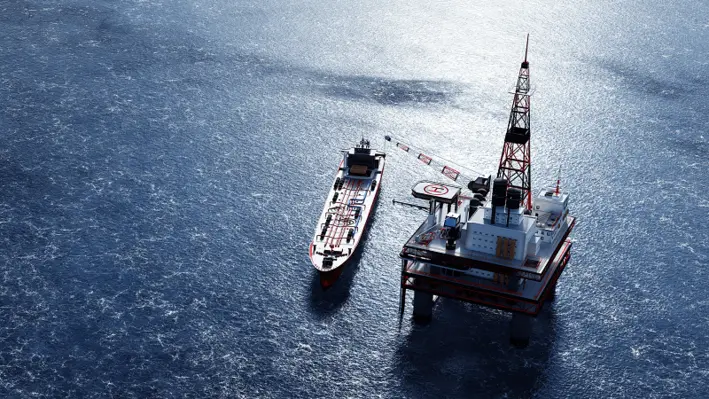

At the Offshore Well Intervention Mediterranean 2021 conference, Remke Ellis, Domain Champion at TGT Oilfield Services, hosted a panel session to discuss the economics of well intervention and how to implement effective preventive maintenance plans in order to boost production.
Ellis opened the session by asking the panellists about ways to implement successful well intervention operations. With more than 10 years experience in completion workover well intervention, Atef Mohamed, Completion and Workover Supervisor at BAPETCO, explained that case study is essential and that key points of the operation that need to be addressed need to be set at the start – these include the scope of operation, a credible programme plan, an equipment checklist, an approved MOC, a calculation review as well as a crew and operator checklist.
Mustafa Adel Amer, Well Integrity Specialist at BAPETCO, added that the delivery of the technical aspect of the operation itself from the asset team has a big contribution to a successful project. Amer, an engineer and natural gas analyst with years of experience in the upstream oil and gas sector, gave an example by noting that the delivery of the right range of the reservoir pressure and the right range of perforation contribute to the operation being done efficiently and safely. For instance, wrong delivery of reservoir pressure can lead to safety hazards and equipment loss. Strong delivery and communication between petroleum engineering and well operations, with clean delivery of technical aspects is needed for a successful operation.
Proper well control of the operation
Mohamed spoke about measures of proper well control, commenting that operators have to differentiate between rig-based well intervention and rigless operations. When working without a rig, hazards exist because they are dealing with high well pressures. The engineers have to also confirm all the equipment is certified and depression tested. After the operation is started, the operators have to determine whether they are deploying slickline or E-Line because there are noticeable differences between one another. If they are going with whole tubing, confirming the proper functioning of check valve becomes crucial because whole tubing needs to be controlled from both inside and the outside. This option is not valid incase of slickline, or Eline because of the presence of the wire and the control around it.
Amer added that setting scenarios before going to the operation proves to be quite handy. For example, simulating scenarios of what can go wrong can help the team in repairs and in case of an unexpected event, implement measures to deal with it. Rather than dealing with it on the site, it is always good to have prior knowledge about shortcomings.
Training for the drills in well control situations for the crew is also very important and it is crucial to determine the weaknesses of the crew and if they can deal with it correctly in case of an emergency.
Checking for discrepancies in oil wells downhole
Oil pressure plays a major role in well intervention. The operators have to select the appropriate casing for the reservoir. For example, if higher oil pressure is detected, the operator might as well choose a higher-grade casing to deal with the amount of pressure. The panel concluded that oil pressure plays a major role in well intervention and having the right equipment for it also makes a huge difference in carrying out the intervention in a safe and efficient manner.
The panellists concluded by noting that, in order to increase production in both gas and oil wells it was important that that well integrity and production enhancement worked together before also acknowledging the growing influence of data analysis in the well intervention space – a phenomenon which will only serve to enhance campaigns in the future.


Intelligent Wellhead Systems (IWS), a leading supplier of digital technologies that improve oil and gas well completion operations, has announced that oil and gas company algorithms to improve completions may now be combined with hydraulic fracturing, wireline, and pressure control job data.
By doing this, customised workflows, threshold alerts, and other analytical applications can be created.
The company’s inVision Technology Platform features a powerful data acquisition and control system, iHub, which is a proven digital technology infrastructure at the wellsite for hydraulic fracturing and wireline operations.
The latest innovation for the platform is the ability to leverage the iHub infrastructure provided by IWS to implement operator-driven analytics on the Edge or in the Cloud. The iHub delivers field-proven data acquisition, storage, bi-directional sync, Edge computing power, and an open infrastructure to enable operators to deploy and implement their own proprietary algorithms or digital workflows on the Edge or in the Cloud.
Bob Duncan, Vice-president of innovation at IWS commented, “There is growing demand from E&P data science teams and completion engineers to implement their software developments on the Edge or in the Cloud. We now have a proven solution of equipment, infrastructure, and hands on the ground to make these implementations possible in a cost-effective manner.”
The inVision Technology Platform integrates engineered safety controls, automated digital standard operating procedure compliance, and Digital Handshake processes to improve the safety and efficiency of hydraulic fracturing valve activation and wireline operations.

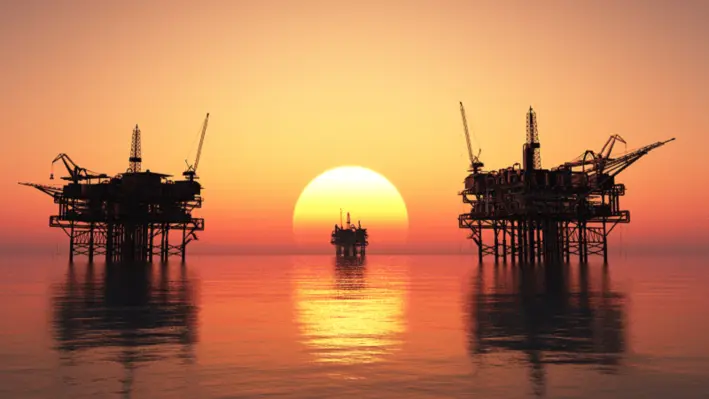

First Marine Solutions (FMS), an offshore moorings expert, awarded a seven-figure contract by well decommissioning specialist, Well-Safe Solutions.
The agreement will see FMS provide its full spectrum of marine consultancy services, including provision of equipment, marine services, and survey and marine engineering.
Earlier this year, Well-Safe Solutions announced it had secured the contract to execute all well decommissioning activity within Repsol Sinopec UK’s Buchan and Hannay fields. FMS’ contract will commence with this 14-well project.
Steven Brown, FMS Managing Director, said he is incredibly proud to be associated with such an innovative project. He remarked, “This well P&A campaign represents a shift in the offshore decommissioning commercial landscape for which we applaud Well-Safe Solutions. I believe its decision to award this contract to FMS firmly establishes our reputation as the North Sea’s leading integrated mooring and marine service provider.
“The agreement has been four years in the making – a period of time that has seen FMS evolve to an impressive extent through significant investment in personnel, technology and facilities. Since 2017, our workforce has increased fourfold and is now led by a management team of industry experts, allowing us to strengthen our position not only in the North Sea but across a number of international markets; we look forward to supporting Well-Safe as it expands its global business.”
Commenting on the contract award, Lou Duncan, Rig Manager at Well-Safe Solutions, noted, “As we prepare for the deployment of the Well-Safe Guardian, it’s vital to us that we utilise trusted partners to enable timely and safe fulfilment of our obligations.
“Key to our philosophy is the importance of collaboration in order to capture, retain and share knowledge for the benefit of our clients and future operations. We’re looking forward to working alongside FMS during a period of strong growth for Well-Safe Solutions.”
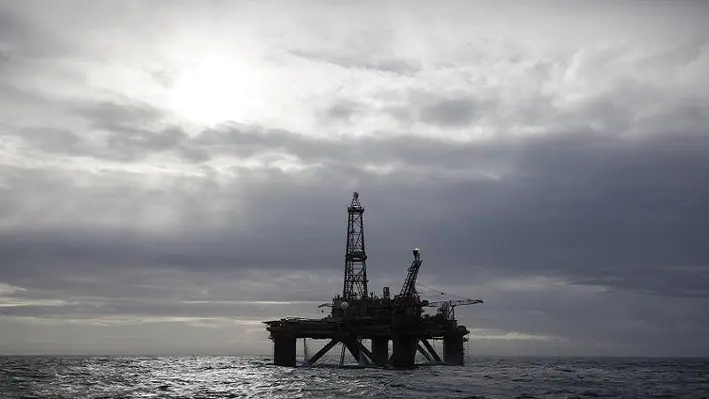

In an operational and financial update, Hurricane Energy has announced that it has successfully completed the plugging and final abandonment (P&A) of the Lancaster 205/21a-4z well.
The well is located in the Lancaster Field, West of Shetland in Scottish waters, which was discovered in 2009. The company is implementing a phased development of the field with the first phase of development, the Early Production System (EPS) coming on stream in June 2019.
During November 2021, the company plugged the 205/21a-4z well for a cost of c. US$1mn. Hurricane also disclosed that US$2.2mn of decommissioning security (previously classified as restricted cash) has now been released back to the company and has been used in part to fund the P&A activity.
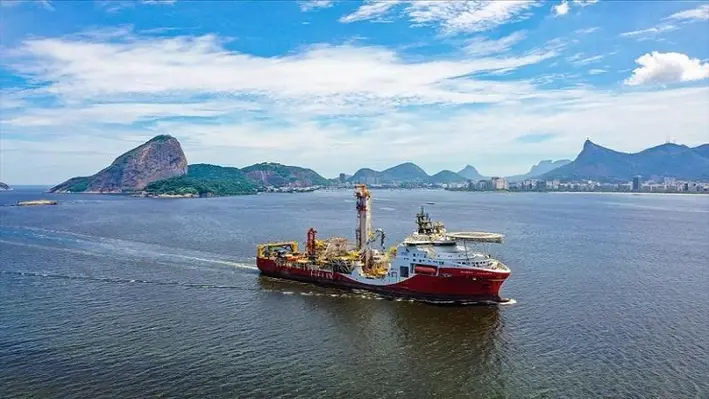

Helix Energy Solutions Group, Inc. (Helix) has extended its well intervention charter and services contracts for the Siem Helix 2 offshore Brazil with Petróleo Brasileiro S.A. (Petrobras).
This will extend the original four-year contract by one year at a reduced rate reflective of the current market. The Siem Helix 2 is now set to remain under contract with Petrobras until mid-December 2022 performing riser-based well intervention activities.
The Siem Helix 2 is a purpose-built, advanced well intervention vessel capable of performing a wide range of subsea services including production enhancement, well decommissioning, subsea installation work, offshore crane and ROV operations, offshore construction work and emergency response capabilities.
Scotty Sparks, Helix’s Executive Vice President and Chief Operating Officer, remarked, “On the back of our recent accommodation and support contract for sister ship the Siem Helix 1 in Ghana for another customer, we are glad to finalise this process and look forward to continuing a long and productive working relationship with Petrobras.
“The Siem Helix 2 has consistently provided industry-leading well intervention services to Petrobras. This extension demonstrates the capacity for Helix to continuously provide innovative solutions to fit our clients’ needs backed by our experience and proven track record.”
Helix continues to make a global impact on the global stage with this announcement coming hot on the heels of its contract for the plugging and abandonment of wells in the Tui Oil Field, New Zealand. Click here for more details on this announcement.


On the second day of the Offshore Well Intervention Gulf of Mexico 2021 conference, attention turned to technology and operational excellence and plug and abandonment, before attendees were exposed to a number of in-depth case studies.
As chairman for the second day of the conference, Nathan Wolford, Project Manager at C-Innovation, opened the proceedings by noting that in this modern world it is easy to take energy for granted. “Covid-19 saw a collapse in demand for energy products, but it got better and in 2021 we are rebounding in our energy consumption and forecasts expect that we will meet or exceed the 2019 levels (highest historical levels to date). By 2040 the forecast the energy demand will increase by 30%.
“83% of energy worldwide is derived from fossil fuels and oil is the biggest of this. As oil producers and service companies, the good news is oil and gas is the dominant worldwide energy source and will continue to be for the foreseeable future. Demand will increase by 30% over next three years, so in some ways we have an obligation to create more production and more energy.
“So we going to have to find more efficient ways to increase existing production through production enhancement mechanisms, and find safe and efficient ways to P&A ageing wells and fields and continue to develop technologies to gain efficiencies on these.”
Over the course of the day, this speakers and attendees demonstrated that they clearly had an intention to do so.
For example, one notable highlight was Zach Bruton’s presentation on the solutions that Baker Hughes has in their toolbox for use in the GOM. The Growth Lead for North America Subsea at Baker Hughes outlined the agnostic and modular tooling design programme that they have developed, introducing the Tree Retrieval Tool and the Tubing Hanger Retrieval Tool before discussing passive well monitoring technology and its possible applications in the region. The session, titled ‘Optimising Asset Retirement Through Agnostic Technologies’ was concluded with a case study from the UK and received a good reception from the audience - interest was demonstrated by the many questions that were directed towards Bruton.
Following this session with another equally engaging demonstration by Christopher Thompson, VP of Business Development at United Subsea Specialists. This young company is committed to delivering equipment to reduce critical path time, cost of operations and risk for operators. Thompson presented several innovative solutions his company has brought to the market, such as their 350t-750t Wire Line Frames, which is enabling them to achieve this commitment.
The plug and abandonment section of the day was kicked off with a panel discussion featuring representatives from Chevron, Schlumberger and Welltec. The experts explored the different types of P&A being executed within the GOM before focusing on the value that can be achieved from performing P&A from a dedicated well intervention vessel as opposed to a rig.
The last point of call was turning to case studies which, as the final section of the conference, were last but certainly not least. Highlights here included a presentation from Bruce Trader, President of MADCON Corporation, who reviewed the development and design of the Structural Composite Retrofit (SCR) Process which restores structural integrity and provides long term corrosion protection to severely corroded or damaged conductors and well casings. Trader presented a number of case studies on the SCR Process and noted that, to date, it has been used to restore the original design capacity and provide long term corrosion protection to hundreds of wells.
The final session of the conference was an engaging presentation from Welltec and Wellgrab AS on replacing conventional heavy fishing methods with light controllable intelligent tools. Garry Andrews, Senior Business Development Manager at Welltec described the solutions that Welltec provides for fishing operations, such as the Well Stoker and the Welltec’s Release Device (WRD), touched on why E-line is preferable over the convention heavy means, outlined some related case studies and finally discussed the Wellgrab AS and Welltec collaboration. Geir Magne Mo Johnsen, Founder and COO of Wellgrab AS followed this by demonstrated the capabilities of its digital well intervention robot which can be converted to fish anything inside or outside a well. The versatility and adaptability of this tool means that this is the only tool Wellgrab AS has in its tool suite.
Each session was sandwiched by networking drinks which allowed attendees, for one of the first times in nearly two years, to meet face-to-face, discuss and potentially formulate partnerships and business propositions for the future. The entertaining conference concluded with a view to returning again in the next year, hopefully when the world has made even more progress along the exhausting road to recovery.
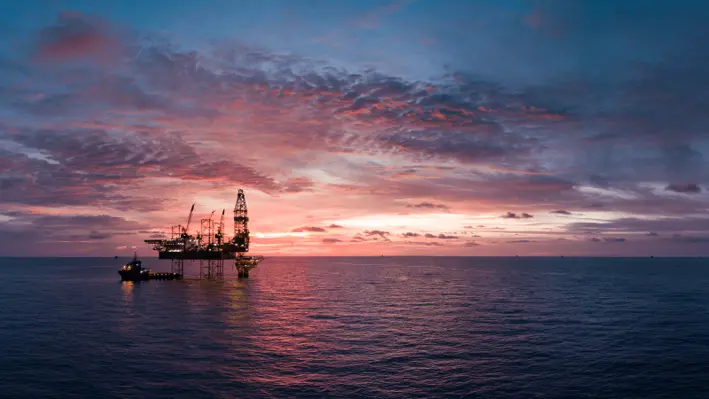

Returning live and in-person, the Offshore Well Intervention Gulf of Mexico 2021 conference treated assembled industry stakeholders to an informative two-day exploration of the state of well intervention in the region and examined the technology and best practices which have the potential to shape campaigns of the future.
Jim Maher, President of Trendsetter Vulcan Offshore (TVO) who co-chaired day one of OWI GOM 2021, opened the conference by noting his delight at finally being able to speak to everyone in person and emphasised that “times of great dislocation, which these clearly have been, are often the times where most innovation comes to the fore.
“As the market recovers, the intervention technologies are among the most viable as they are the closest approximation to short cycle. As we start going again, intervention technologies are certainly going to be among the most competitive for the capital available.”
Following this, over the course of the next two days, attendees were treated to a banquet of engaging sessions featuring presentations and discussions from the most influential service providers, operators, consultants, and more.
BP lead a panel discussion on how the company achieved optimal results on its ongoing RLWI campaign (which began two years ago) and the challenges it has faced and how they will continue to overcome them. Representatives from C-Innovation, Halliburton and JDR Cable Systems joined the discussion and together they explored the innovative tools, equipment and technology which could be deployed in order to achieve the most efficient intervention campaigns.
The implementation of new technology was one of the conference’s clear themes, which Charles Brooks, Technical Sales Representative from Interwell, heavily leaned into as he presented on the Interwell Barrier Verification System. This market-leading barrier assurance tool provides, as demonstrated by a case study from the GOM, time efficiency, confident and correct verification of well barrier and integrity, the ability to reduce tensile stress from pressure from pressure testing from surface (especially in fragile well constructions) and more. This solution was quoted as the most extensive downhole barrier verification the operator has performed in the region, proving its quality.
Maxim Volkov, Principal Domain Champion at TGT Diagnostics, followed closely on Brooks’ heels by introducing the Sand Flow product which precisely locates sand entry to the wellbore and provides a qualitative sand count, indentifying problem zones to help combat the serious issue of sand production. Through the use of case studies, Volkov demonstrated how the Sand Flow product, when used in tandem with Tendeka’s Filtrex solution, can localise target and fix sand issues affecting wellbores to ensure productivity is restored and integrity is maintained.
Not to be left out, Archer joined the party as Kevin Squyres, Sales and Service Delivery Manager, demonstrated the capabilities of the Stronghold Barricade, Defender and THOR solutions which can eliminate the need for milling, providing an effective alternative to traditional methods of plug and abandonment.
While new technology can bring value, it is also important to understand and asses the risk of incorporating it into intervention campaigns. This topic was covered in detail by industry experts from Schlumberger, United Subsea Specialists, Chevron and CRG Oilfield Abandonment LLC at the session focused on intervention technologies for existing field uplift.
In the following sessions on day one the sessions were dedicated to:
• Understanding the considerations when evaluating different intervention philosophies and technologies. A Baker Hughes presentation highlighted that light well intervention can achieve substantial benefits such as 55% total emissions reductions (when compared to a rig-based operation) as well as cost-saving incentives.
• The consolidation of well opportunities, where representatives from Trendsetter Engineering, BP, MADCON and TGT Diagnostics presented case studies of campaigns that have increased production and extended the profitable life span of wells as well as explored the future opportunities presented by LWI, HWO and coiled tubing technologies.
• Considering lifecycle completion. Shell, BP, PRT Offshore and Welltec associates discussed the completion design considerations; new completion and well technologies which could have an impact on the future well intervention scope; and how regional operating environment influences operations view’s on new well programmes.
• The successful application of real-time enabled coiled tubing for abandonment of a deviated well with complex anomalies. Ed Adams, Customer Engagement Coordinator at Schlumberger showcased a case study on a tricky well which was causing issues for the operator. Schlumberger deployed the ACTive CCL to detect tubing anomalies and implemented a number of solutions to return the well to safe state which was all done in days before hurricane Elsa entered the GOM.
The day was closed with a brief review of the enormous amount of material that was covered with topics such as marketing dynamics, creating value in well intervention and technology and operation considerations in particularly standing out. Before the attendees retired to the networking drinks, they looked ahead to day two and the exciting subjects that were yet to be explored.
Page 86 of 110